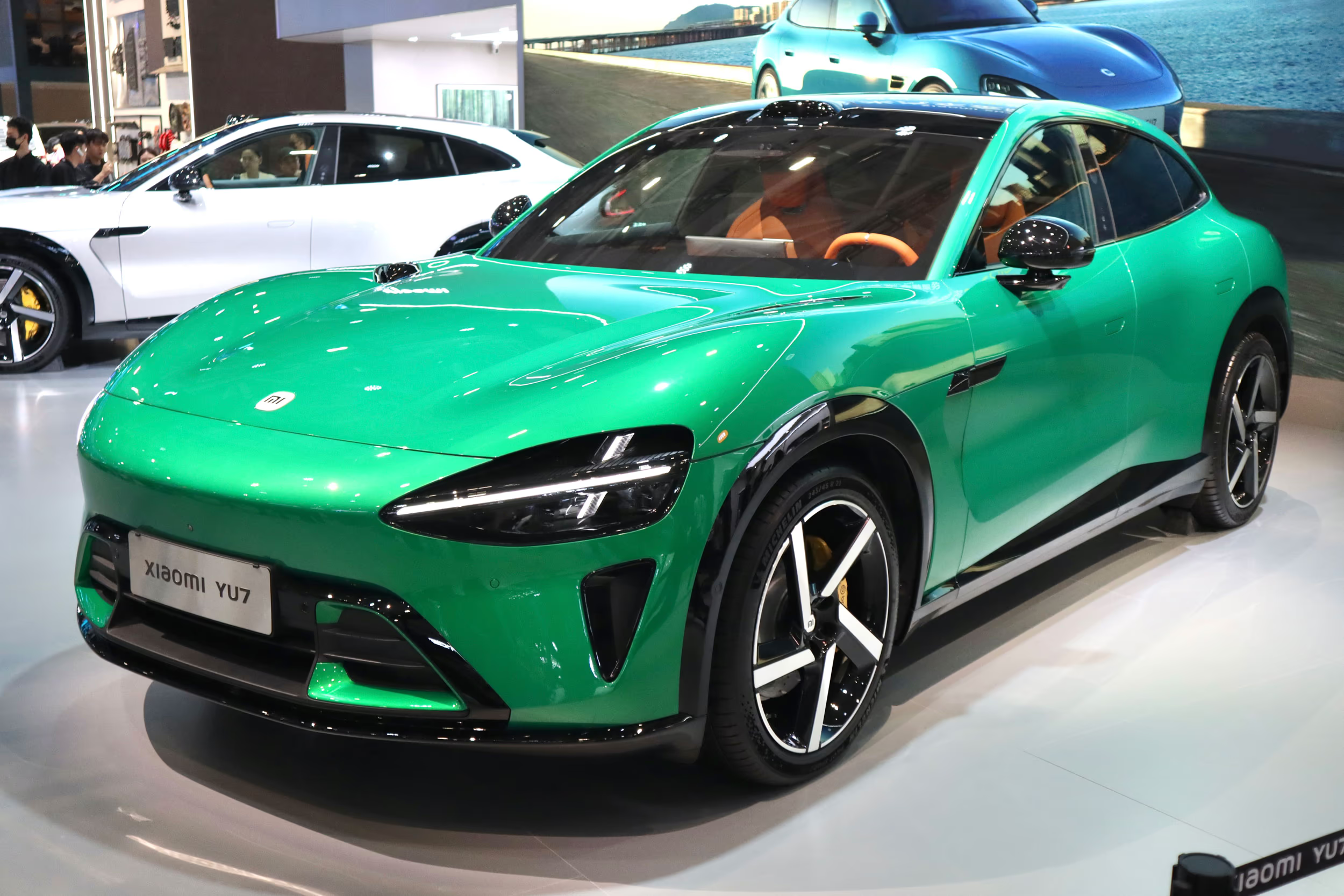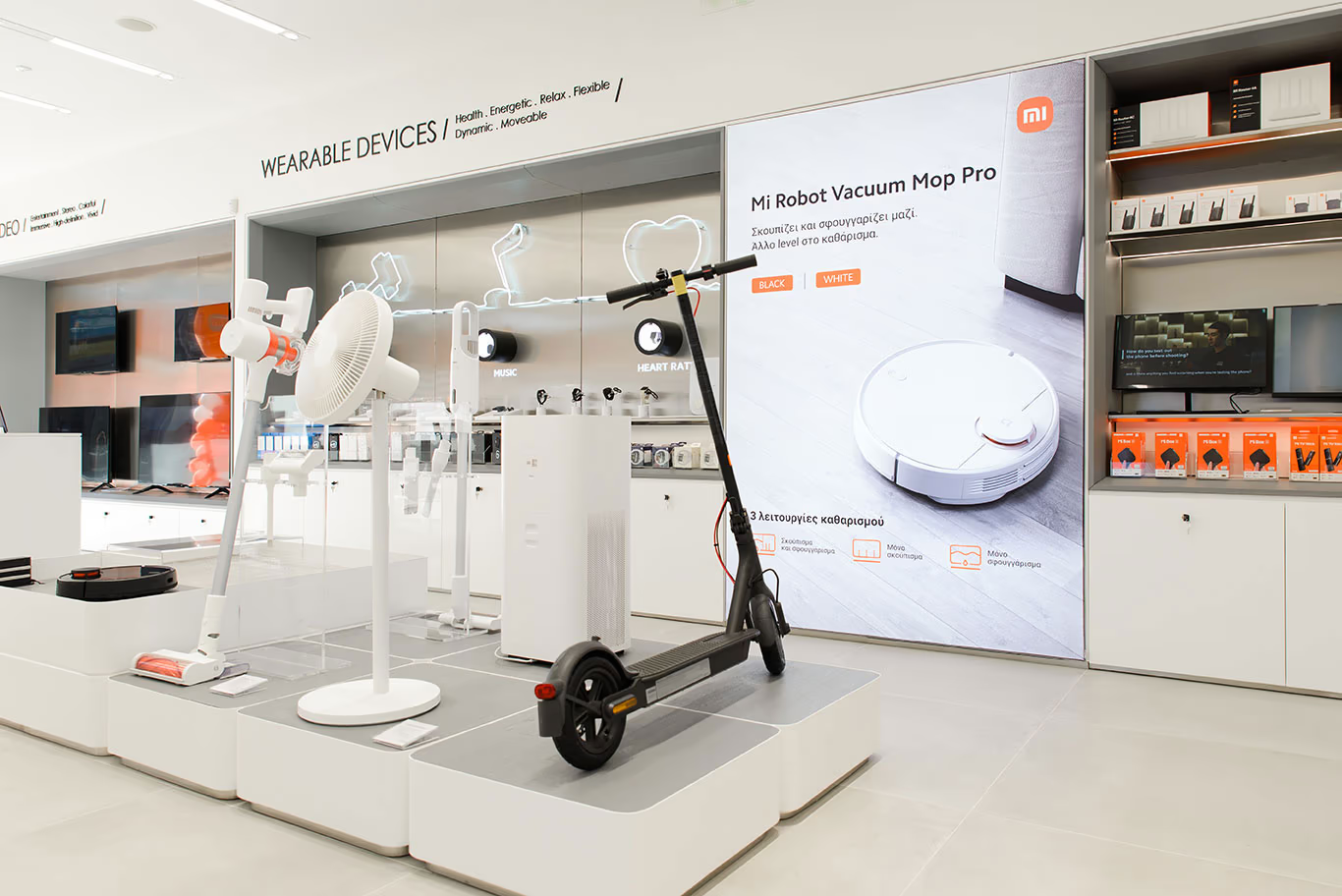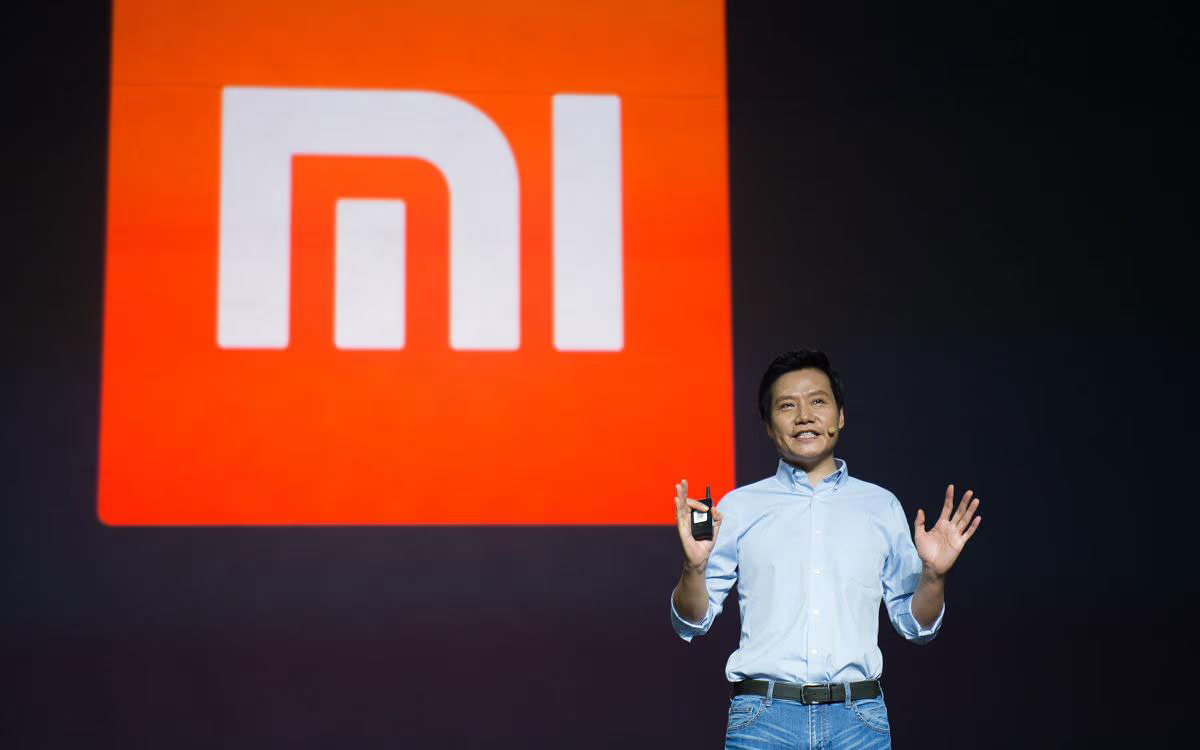Smartphones, TVs, air conditioners—and now, cars. In just 15 years, Xiaomi has grown from a startup into one of the world’s largest electronics manufacturers, trailing only Apple and Samsung in smartphone sales. But founder Lei Jun wants more: he is turning Xiaomi into a vast ecosystem that spans everything from hardware and software to proprietary factories and branded showrooms.
Since launching its first electric vehicle in 2024, the company has sold more than 300,000 units and built an auto plant in Beijing. The new yu7 model sold 200,000 units in just three minutes. As Apple’s automotive project collapsed, Xiaomi is doubling down on vertical integration, expanding its offline retail footprint abroad, and capitalizing on Lei’s charisma—his presence within the brand is often compared to that of Steve Jobs. Even a fatal accident involving one of its EVs has not shaken consumer confidence: millions of users familiar with Xiaomi smartphones are ready to follow the company into its next chapter.
But can Xiaomi hold its ground against giants like BYD and Huawei—and avoid stretching itself too thin in pursuit of a “future” it is determined to build?
Since Xiaomi’s founding in 2010, CEO Lei Jun has consistently demonstrated a remarkable talent for sales. A decade ago, he entered the Guinness World Records by selling 2.1 million smartphones online in a single day. Today, his ambitions go far beyond budget handsets: just last month, Xiaomi sold more than 200,000 units of its first electric SUV, the yu7, within three minutes of launch.
The company’s growth in recent years has been nothing short of dramatic: in global smartphone sales, Xiaomi now ranks third, behind only Apple and Samsung. At the same time, the brand has been building a comprehensive ecosystem of devices compatible with its phones—from air conditioners and robot vacuums to scooters and televisions. After a sharp downturn in 2022, which the company attributed to "cutthroat competition" in the Chinese electronics market, Xiaomi has rebounded: its revenue rose 35% year-on-year, and since early 2024, its market capitalization has nearly quadrupled, reaching HK$1.5 trillion (US$190 billion).
The launch of the yu7 marked Xiaomi’s second major step into the auto industry, following the debut of the sporty SU7 sedan in March last year. It’s a feat Apple failed to achieve, abandoning its EV project after a decade of setbacks and multibillion-dollar losses. Since starting its automotive division in 2021, Xiaomi has rolled out over 300,000 electric vehicles and amassed a backlog of orders that will take more than a year to fulfill. Although the auto unit remains unprofitable, Lei Jun expects it to turn a profit by the end of this year—a rare milestone in China’s fiercely competitive car market.

yu7

One of Xiaomi’s stores in Europe.
Xiaomi is now setting its sights on the global market. In the coming years, the company plans to open 10,000 stores outside China—a sharp increase from the few hundred that operated last year. These locations will serve not only as showcases for smartphones and consumer electronics, but also as showrooms for its vehicles.
Part of the company’s success stems from impeccable timing. China has accumulated vast expertise in auto manufacturing, and a surplus of parts and equipment has driven down costs. Moreover, obtaining approval and building new factories takes significantly less time in China than in most other countries. Lei Jun has also managed to recruit top industry talent to the auto project, luring them away from rival firms.
But Xiaomi’s success in this field is no mere coincidence. Unlike Tim Cook, who kept his distance from Apple’s automotive ambitions, Lei took personal charge of the project. That required a fundamental shift in the company’s business model: like Apple, Xiaomi had previously operated without its own production facilities, relying on external contractors. Under the EV program, however, it built its own factory in Beijing—which is now undergoing expansion. This approach has extended to other areas as well: last year, Xiaomi began manufacturing smartphones at another facility in Beijing and is now constructing a new plant in Wuhan to produce home appliances, starting with air conditioners.

Can Apple Catch Up With the AI Boom It Helped Trigger?
As Google Rolls Out Integration, Cupertino Still Lags Behind on Core Features

What Will Sam and Jony Build?
It Might Be the First Device of the Post-Smartphone Era
Marketing strategy has also played a crucial role in advancing Xiaomi’s automotive ambitions—built around the charisma of Lei himself. His popularity in China rivals the cult-like reverence once afforded to Steve Jobs. Thanks to his involvement, Wuhan University has seen a resurgence in public interest. Fans of the brand—known as “Mi Fans”—collect branded merchandise and line up to buy every new product.
Even a serious incident in March, when three students died in a crash involving an SU7 operating in autopilot mode, did little to dampen enthusiasm for the new model. The accident drew a wave of criticism and briefly sent Xiaomi’s stock price down, but the launch of the yu7 three months later showed that public trust in the brand remains intact.

Lei Jun
Xiaomi benefits not only from a charismatic leader but also from a vast user base through which it promotes new products. According to the company, by the end of last year it had 700 million monthly active users—a 10% increase over the previous year. Many of them purchase games through Xiaomi’s app store and view ads placed by the company itself. Analysts at Bernstein estimate that advertising accounts for half of Xiaomi’s profits. A significant share of users shop directly through the company’s app—and Xiaomi has already succeeded in persuading many to upgrade to more expensive smartphones. To succeed in the EV sector, it needs only a small fraction of that audience to buy a car. Moreover, many Chinese consumers who bought their first Xiaomi smartphone in the early 2010s are now around 35 years old—a key demographic for electric vehicle sales.
Lei Jun is also looking beyond the Chinese market. Nearly half of Xiaomi’s revenue from smartphones and smart devices now comes from overseas, primarily from developing countries such as India and Indonesia. The company aims to begin exporting electric vehicles by 2027. Still, its success abroad may prove less striking: brand recognition and user loyalty are considerably weaker outside China, and many people have never heard of Lei Jun. That’s why Xiaomi is betting on building a broad network of offline stores to raise its international profile.
At the same time, the company continues to broaden its business lines. Xiaomi has developed its own humanoid robot, CyberOne, and in May unveiled a self-designed three-nanometer chip. Nearly half of its workforce is employed in R&D, where spending rose 26% last year to $3.4 billion—more than the company’s net profit over the same period. Xiaomi is confident that building core technologies in-house enhances efficiency and creates barriers for competitors.
The biggest risk is spreading itself too thin across too many fronts. The price war in China’s EV market is only intensifying, and despite rapid growth, Xiaomi remains a relatively small player: it sells around 20,000 vehicles per month—ten times fewer than market leader BYD. Competition in smartphones is also heating up: Huawei, weakened by U.S. sanctions in 2019, is gradually staging a comeback. Still, Lei’s powers of persuasion should not be underestimated.
